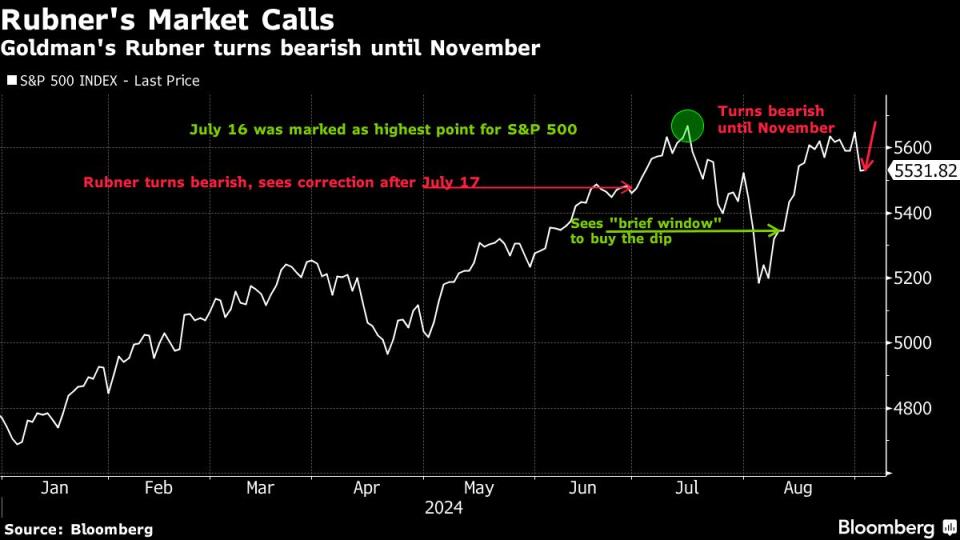Goldman’s Rubner sees potential correction if jobs data is weak
(Bloomberg) — The stock market could be heading for correction if payrolls data comes in weak on Friday, according to Scott Rubner, managing director for global markets and tactical specialist at Goldman Sachs Group Inc.
Most Read from Bloomberg
The bank’s clients are already positioning for a negative technical setup for share prices in the second half of September, Rubner wrote in a note on Wednesday, adding that he expects a risk-off move to begin on Sept. 16. “A market correction may start to get traction if payrolls are weak on Friday,” he wrote.

The end September is historically the worst two-week trading period of the year for the S&P 500, Rubner noted. And this time around, trend-following systematic funds have little room to add equity exposure, while companies are about to head into their earnings buyback blackout periods, further reducing stock market demand. Goldman’s buyback team estimates about $6.6 billion of passive demand from this group until blackout period begins broadly on Sept. 13.
“US corporates have been the largest buyer of the equity market, and we expect their demand to drop by -35% during the closed window,” Rubner wrote. “This week is peak open-window for corporates.”
Positioning is already flashing some warning signs. Ruled-based systematic funds such as Commodity Trading Advisers, or CTAs, have now an asymmetric skew to the downside over the next one-month period. In a flat market, CTAs can sell more than $17 billion of US stocks; in an up market selling can reach $3.7 billion; and in downward market it can climb above $65 billion.
In addition, global active investors, mainly hedge funds, entered September with higher US equity risk than in the last six election cycles, indicating there’s more room for selling as the presidential election approaches. Pension funds are fully funded now and have been reducing equity risk ahead of the vote, Rubner wrote.
Rubner’s recent calls have been prescient. In mid-June, while the market was hitting records and Wall Street rushed to raise S&P 500 targets, he modeled a late summer correction starting precisely on July 17. The S&P 500 fell 1.4% that day and kept falling until it was down 8.5% on Aug. 5. The reaction was even more violent in the tech-heavy Nasdaq 100 Index, which plunged more than 12% over the three weeks to enter a correction.
Then, in mid-August, he turned tactically bullish and called for a brief window to buy the dip in US stocks. The S&P 500 is up almost 4% since then.
Now he’s bearish again, at least until the US presidential election is over, since the “November election becomes a clearing event for risk assets,” Rubner wrote.
That would be welcome news for hedge funds that have been taking money off the table in anticipation of a volatile September, according to data from the prime brokerage desks at Goldman and Morgan Stanley.
Most Read from Bloomberg Businessweek
La justicia no viene al caso en las cortes de inmigración de EE.UU.
Need 100,000 Balloons for a Convention? Here’s the Guy to Call
©2024 Bloomberg L.P.
